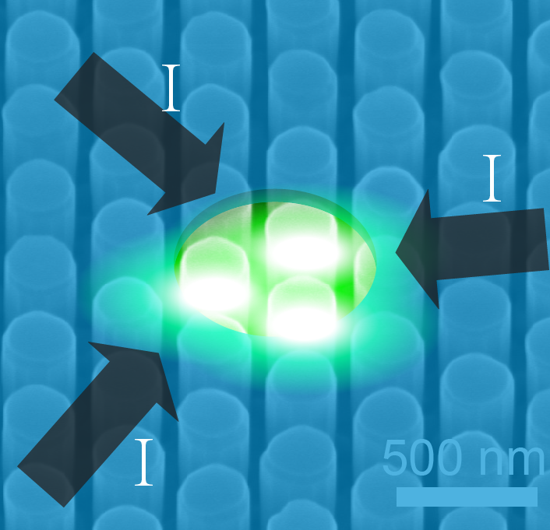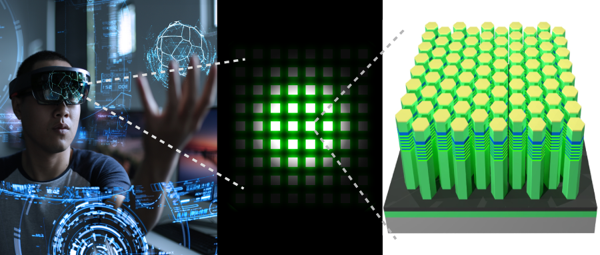Higher brightness, longer lifetime, higher resolution and better color rendering are being pursued for the next generation display technology that could support the development of virtual/augmented reality and metauniverse. Micro-LEDs are considered as the most promising route to meeting these requirements. Besides display applications, visible light communications, bioimaging and detection are also potential applications of micro-LEDs.
Due to the surface damage caused by etching in the fabrication process, the efficiency of micro-LEDs decreases dramatically as the LED dimension decreases, leading to severe "efficiency cliff". The presence of structural defects and impurity incorporation in epilayers also lead to low quantum efficiency and inefficient hole transport and injection. Moreover, conventional Ga-polar high indium content InGaN quantum well LEDs suffer from large densities of defects, disorders, and dislocations and strong quantum-confined Stark effect, which degrade the efficiency and the stability of emission spectrum.
The team led by Prof. Zetian Mi in the University of Michigan, Ann Arbor has demonstrated the use of N-polar nanowires to overcome the efficiency cliff of micro LEDs. The research results are published in Photonics Research, Volume 10, No. 2, 2022 (Xianhe Liu, Yi Sun, Yakshita Malhotra, Ayush Pandey, Ping Wang, Yuanpeng Wu, Kai Sun, Zetian Mi. N-polar InGaN nanowires: breaking the efficiency bottleneck of nano and micro LEDs[J]. Photonics Research, 2022, 10(2): 02000587).
The bottom-up approach for forming the nanowires negates the need for top-down etching. Therefore, any surface damage and associated surface nonradiative recombination can be avoided. The nanowires exhibit core-shell structure formed upon appropriate incorporation of Al in the shell region which further reduces surface nonradiative recombination by confining carriers in the core region that has a lower band gap. The N-polar nanowires exhibit polarization field that is opposite to conventional Ga-polar devices, thus reducing quantum-confined Stark effect and giving more stable emission spectrum under high injection.
For an LED with a lateral dimension of only ~ 750 nm, which consists of approximately a couple of nanowires, a maximum external quantum efficiency ~11 % was measured on wafer without any packaging, which is the highest value ever reported for submicrometer devices to our knowledge. The peak wavelength shift is as small as 6 nm and the broadening of spectrum is negligible at a relatively high current density, which is drastically improved compared to conventional quantum well LEDs. With such high efficiency and ultra-stable operation, N-polar nanowires prove to hold the promise of high performance self-emitting pixels that are essential for high pixel density display technology.
"Our N-polar nanowire LEDs achieved small device dimension and high efficiency simultaneously," said by Dr. Xianhe Liu, "The device dimension is only less than 1 μm. However, the efficiency, even without any packaging, is much higher than that of conventional micro-LEDs with a dimension of 1 μm and comparable to conventional micro-LEDs with a dimension of 10 μm, which indicates that N-polar nanowire structure has broken the efficiency bottleneck associated with the top-down approach for micro-LED fabrication. This is particularly meaningful for applications in ultrahigh resolution mobile displays and near-eye displays, such as virtual/augmented reality devices and systems (Fig. 1)."
The team is continuing improving the performance of green nanowire micro-LEDs (Fig. 2) and developing high efficiency red micro-LEDs as well.

Fig. 1 An artistic image illustrating the green emission of a submicron scale green LED consisting of only a few nanowires.

Fig. 2 Schematic of a VR/AR display with self-emitting pixels consisting of nanowires. (Part of the image is acquired from https://www.shutterstock.com/image-photo/men-playing-virtual-reality-hololens-660774013.)


